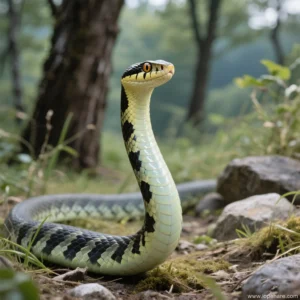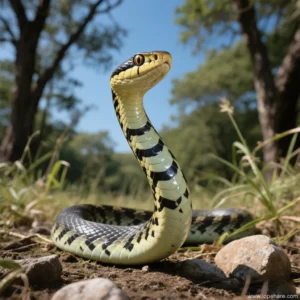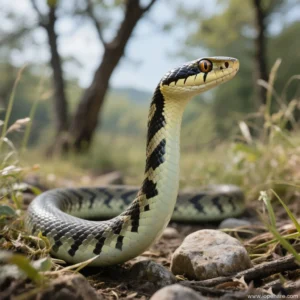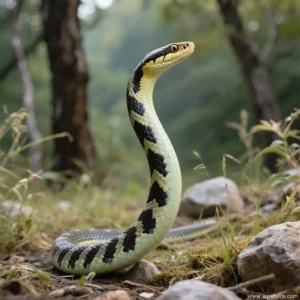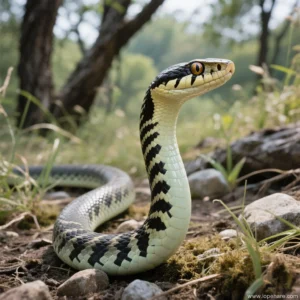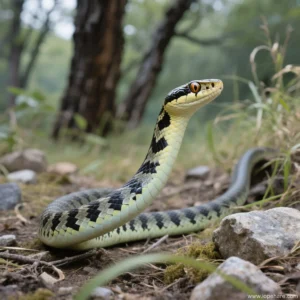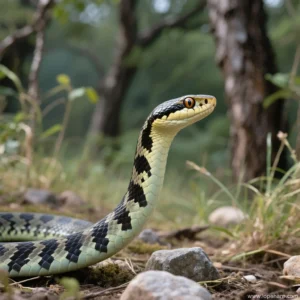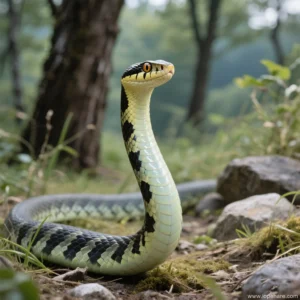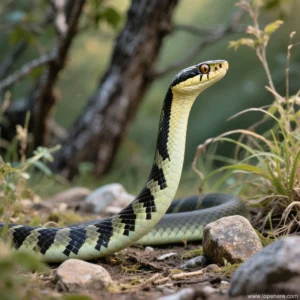Elaphe schrenckii for Beginners: Is This Snake Right for Your First Pet?
Welcome to lopehare! As editors focused on providing comprehensive guides for niche pets, we often encounter questions about which species are suitable for newcomers. The Amur Rat Snake, *Elaphe schrenckii*, also known as the Siberian Rat Snake, is a striking and increasingly popular choice in the pet trade. With its beautiful black and yellow/cream banding and relatively docile nature, it certainly catches the eye. But is this species a good fit for someone just starting their snake pet care journey?
Let’s delve into the details to help you make an informed decision. We believe in equipping you with the professional knowledge needed to provide the best possible care for your unique companion.
Introduction: The Amur Rat Snake
Elaphe schrenckii is a species of non-venomous snake native to Northeast Asia, including Russia, China, and Korea. They are known for their considerable size, often reaching 5 to 6 feet in length, and sometimes even larger. Their appearance is quite distinctive: a dark body with prominent, contrasting yellow or cream banding. This species is primarily terrestrial but can also climb.
In the wild, they inhabit forests, grasslands, and sometimes agricultural areas, feeding on rodents, birds, and eggs. Their adaptability in natural habitats suggests a degree of resilience, which is a positive trait for a captive animal. However, adaptability in the wild doesn’t automatically translate to being easy to care for in captivity; precise environmental controls are still crucial.
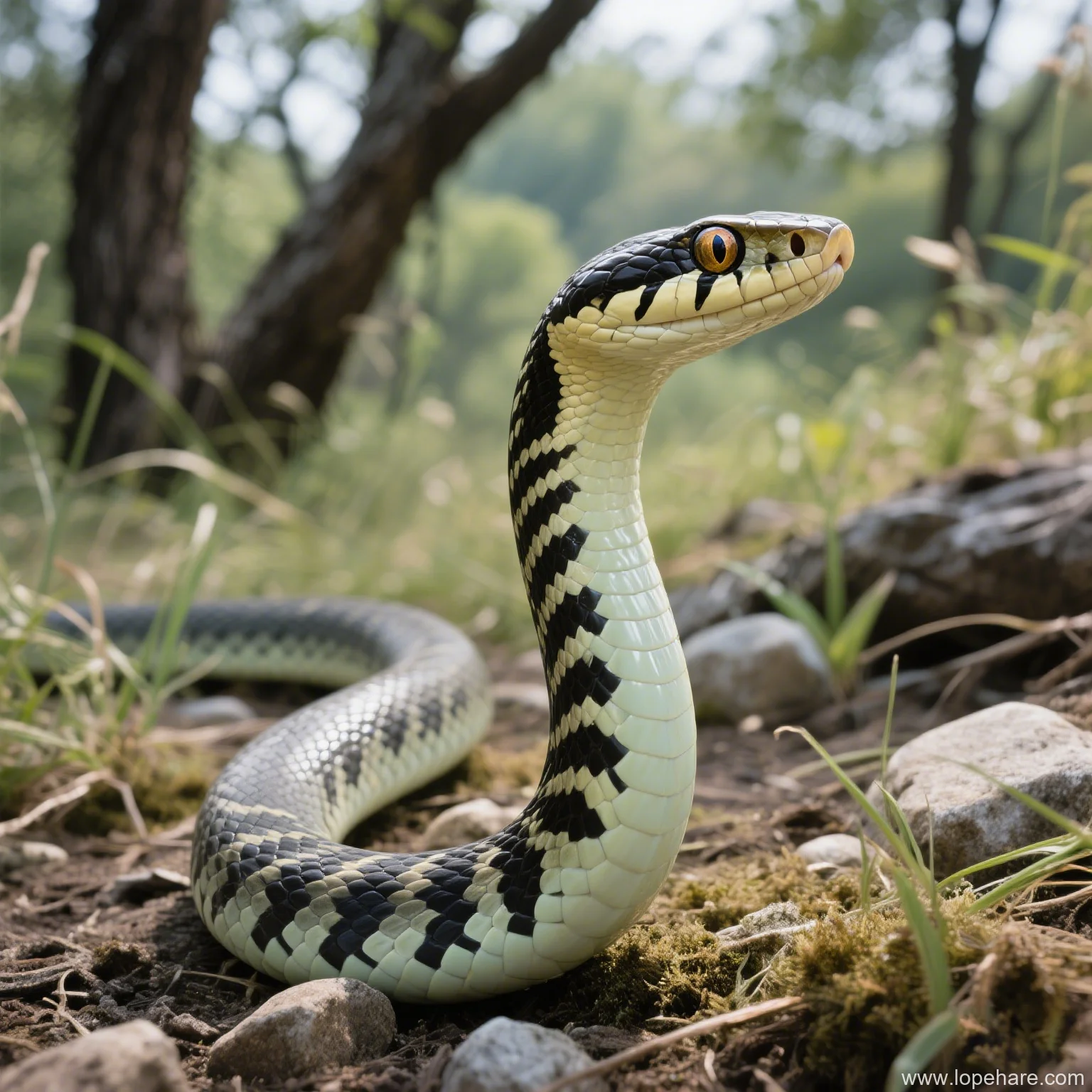
Characteristics & Temperament
Adult Amur Rat Snakes are large, powerful constrictors. Their size is a significant factor when considering them as a first snake. While generally docile, especially captive-bred individuals, their strength requires confident handling. Hatchlings can be a bit defensive and nippy, but they typically calm down with consistent, gentle handling.
Unlike some more nervous snake species, many *Elaphe schrenckii* become quite comfortable being handled and are curious explorers when given the opportunity. They are active snakes that appreciate space and environmental enrichment.
Essential Enclosure Setup
Meeting the environmental needs of an adult Amur Rat Snake is one of the main considerations for a beginner. Due to their size and activity level, they require a substantial enclosure.
- Size: For an adult, a minimum enclosure size of 4x2x2 feet (length x width x height) is recommended, though larger is always better. Younger snakes can start in smaller enclosures, but they grow relatively quickly.
- Type: Secure vivariums or tubs with adequate ventilation are suitable. Screen-top enclosures are generally not ideal for maintaining humidity.
- Substrate: A substrate that holds some humidity but allows for spot cleaning is best. Options include cypress mulch, coco fiber, or a mix. Avoid cedar or pine shavings, which can be toxic.
- Temperature: Provide a temperature gradient. A basking spot around 85-90°F (29-32°C) and an ambient temperature range of 72-78°F (22-26°C) are appropriate. A drop to the low 70s°F (around 21-22°C) at night is acceptable. Use an accurate thermostat to control heating elements (heat mats, ceramic heat emitters, or heat lamps, ensuring the snake cannot touch hot surfaces).
- Humidity: Aim for moderate humidity, ideally 50-60%, with a slight increase during shedding. This can be achieved through substrate choice, a large water dish that can evaporate, or occasional misting. Good ventilation is key to prevent stagnant, overly humid conditions, which can lead to respiratory issues.
- Hides and Enrichment: Provide multiple hides (at least one on the warm side and one on the cool side) so the snake feels secure. Branches, logs, and other decor allow for climbing and enrichment, important for this active species.
Tip: Investing in quality temperature and humidity gauges (digital recommended) is crucial for monitoring and maintaining the correct environment consistently. Stable parameters are key to preventing stress and illness.
Feeding & Hydration
Amur Rat Snakes are generally good eaters. In captivity, they are typically fed appropriately sized rodents (mice or rats). Feeding frequency depends on the snake’s age and size, ranging from every 7-10 days for juveniles to every 14-21 days for adults. Always feed prey that is no wider than the widest part of the snake’s body.
A large, sturdy water dish that the snake can soak in should be provided and kept clean with fresh water at all times. While they get some hydration from their prey, they also drink regularly.
Handling & Socialization
As mentioned, hatchlings can be nervous. Gentle, consistent handling sessions (starting short and increasing duration) can help them become accustomed to human interaction. Avoid handling for 24-48 hours after feeding to prevent regurgitation. Supporting their body adequately when handling is important due to their size and strength.

Potential Challenges for Beginners
While not as demanding as some advanced species, *Elaphe schrenckii* does present some potential hurdles for first-time snake owners:
- Adult Size: Their potential adult size requires a commitment to providing a large, appropriately sized enclosure for their entire life. This takes up significant space and can be a considerable initial and ongoing expense.
- Strength: While docile, an adult can be quite strong. Handling requires confidence and the ability to manage a large, active snake.
- Environmental Monitoring: While not as finicky as say, a Green Tree Python, maintaining the correct temperature gradient and humidity consistently still requires diligence and reliable equipment. Errors can lead to health issues.
- Lifespan: Like many snakes, they are long-lived, potentially living 15-20 years or more with proper care. This is a long-term commitment.
Considerations: It’s crucial to research not just the exciting aspects of owning an Amur Rat Snake, but also the potential challenges and responsibilities, especially regarding enclosure size and long-term care.
Successfully navigating these factors is key to providing a suitable environment for a large beginner friendly snake like the Amur Rat Snake.
Pros and Cons for a Beginner
| Pros | Cons |
|---|---|
| Generally docile temperament (especially captive-bred adults) | Requires large, expensive enclosure as an adult |
| Active and interesting to observe | Hatchlings can be defensive |
| Good eaters | Size and strength require confident handling |
| Beautiful and striking appearance | Specific temperature and humidity requirements need careful monitoring |
| Relatively hardy compared to some exotic species | Long-term commitment (15+ years) |
Conclusion: Is It Right For You?
From our perspective at lopehare, the Amur Rat Snake (*Elaphe schrenckii*) can be a suitable first snake if the prospective owner is prepared for the commitment its size and specific environmental needs entail. They are not as delicate as some exotic species, and their generally calm disposition makes handling manageable once they are comfortable. However, the requirement for a large enclosure and the need to consistently maintain specific temperature and humidity levels elevate their care needs beyond that of, for example, a Corn Snake or Ball Python, which are often cited as the absolute easiest beginner snakes.
If you have thoroughly researched their requirements, are prepared to invest in a spacious and properly equipped enclosure, and are comfortable handling a large snake, then an Amur Rat Snake could be a rewarding first pet. They offer the beauty and intrigue of a larger constrictor without the extreme husbandry demands of some alternatives. However, if space is limited, or you are looking for a truly minimal-effort pet, a smaller, less demanding species might be a better starting point.
Ultimately, success with any pet, especially a less common one like the Amur Rat Snake, comes down to preparation, research, and dedication to providing the best possible care. We hope this guide helps you decide if this magnificent snake is the right addition to your home.
References
